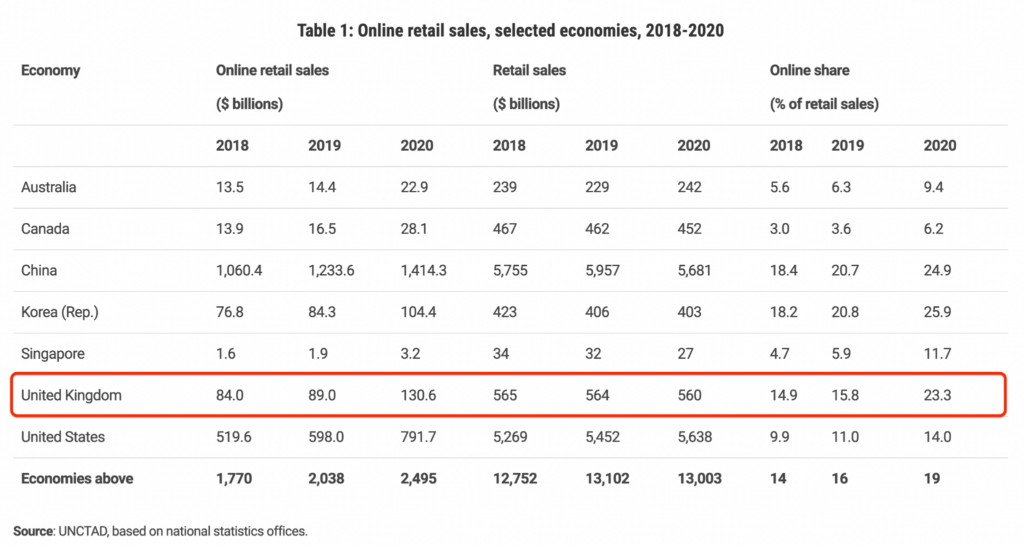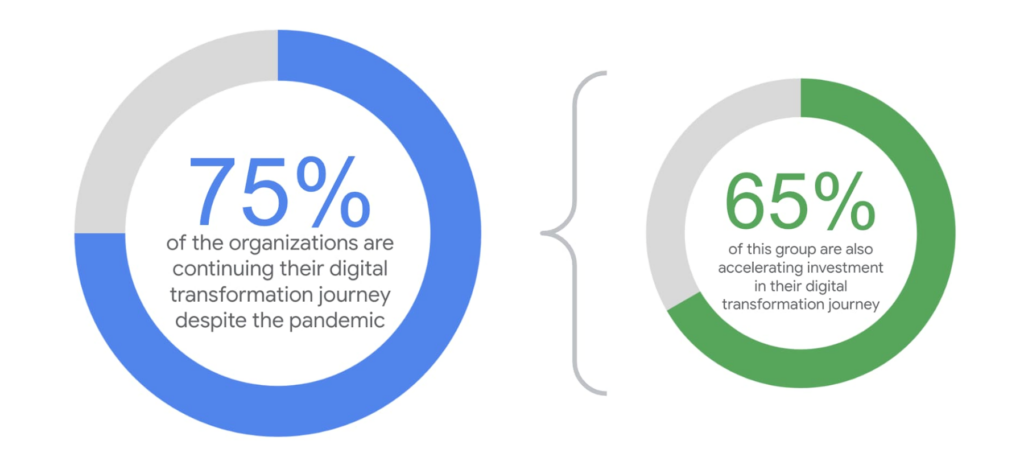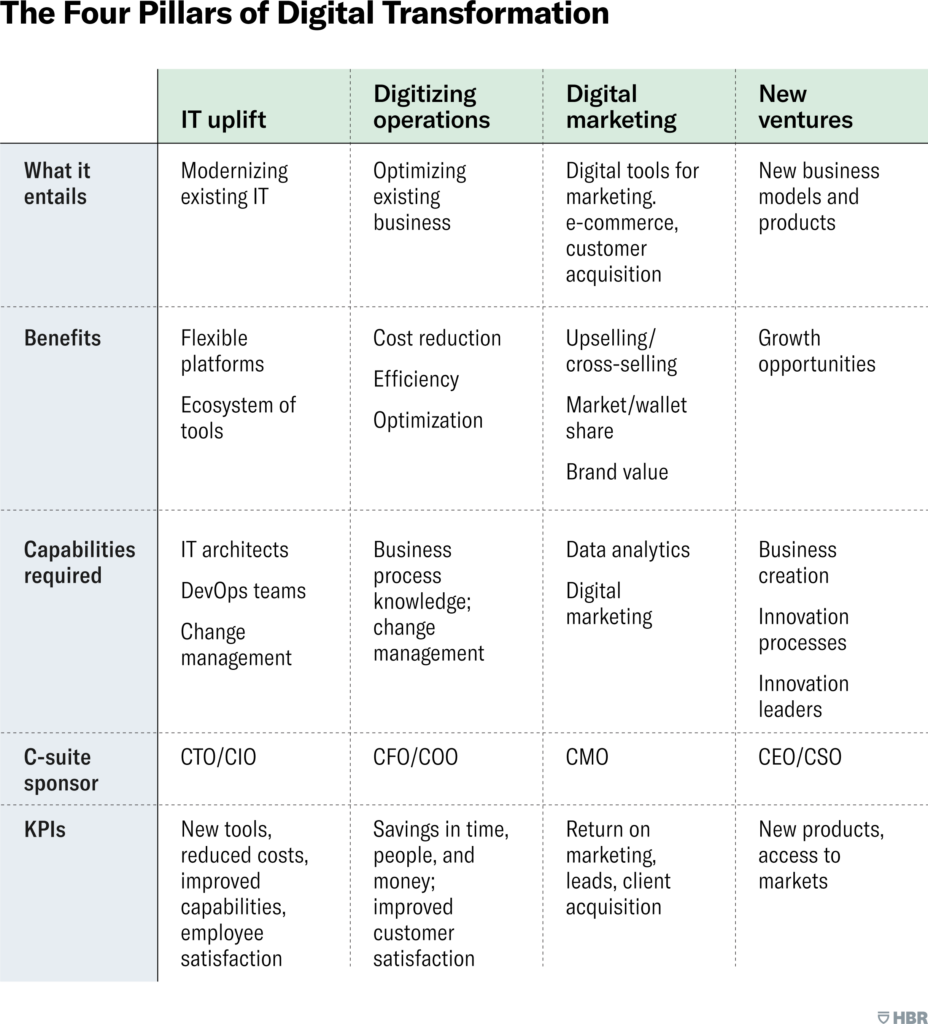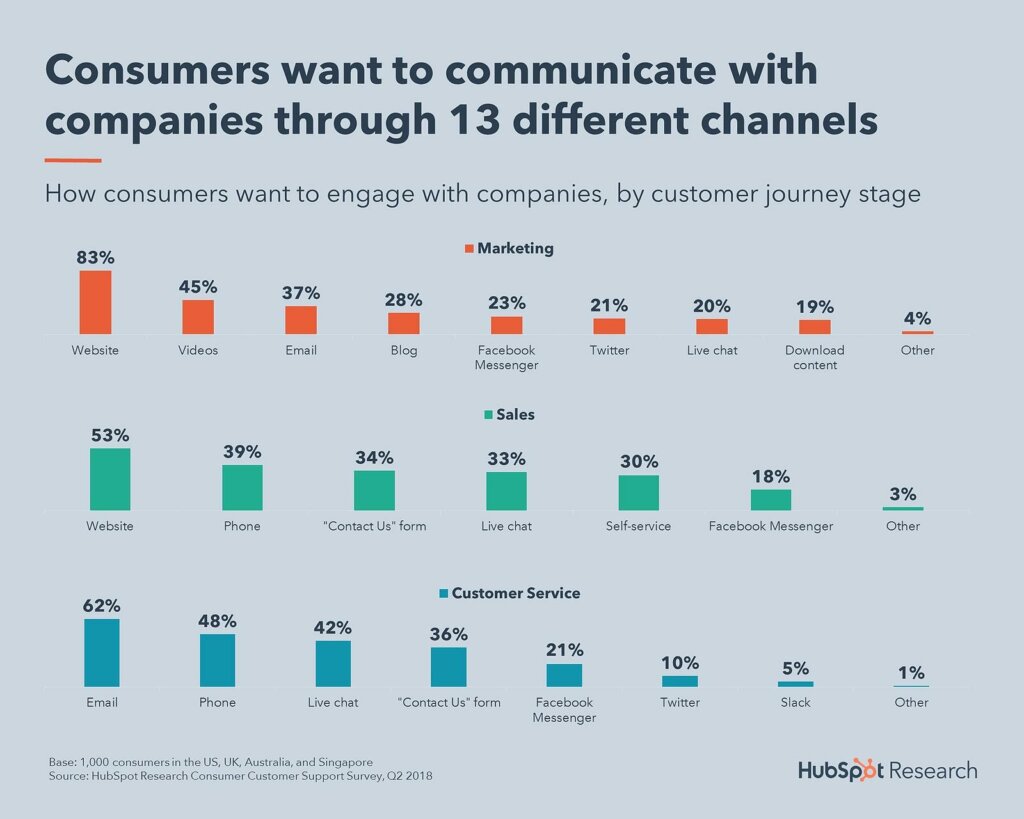Digital transformation in retail has come under focus over the past two years in the wake of disruptions and swift changes in customer behaviours caused by the COVID-19 pandemic. But what exactly does retail digital transformation look like, and how can businesses jumpstart their digital journey?
If there’s one thing the retail industry learned from the COVID-19 pandemic, it’s that digital maturity — a measure of an organisation’s readiness to provide value through digital channels — is tied directly to survival. Amid lockdowns and closures of non-essential brick-and-mortar stores, consumers the world over naturally took to the internet to do their shopping.
According to a 2021 UNCTAD report, the share of eCommerce sales in the UK jumped from 15.8% in 2019 to 23.3% in 2020 — the third-highest growth rate next to South Korea and China. This trend was consistent with retail activity across multiple markets — globally, eCommerce grew by 3% between 2019 and 2020.

Meanwhile, an Adobe report shows that global online spending in May 2020 (around the height of the first pandemic lockdown) grew by 77% year-over-year — an accelerated rate equal to around four to six years of pre-pandemic growth.
However, the surge of eCommerce is just one aspect of this new digital imperative. As the pandemic disrupted global supply chains and forced employees to work from home, the integration of technology in retail businesses has not only enabled them to stay afloat, it also helped them engage consumers in new ways and add value to their products and services.
This paradigm shift is also known as digital transformation.
What is digital transformation in retail?
At its simplest, digital transformation refers to any instance of digital technology (or set of technologies) fundamentally changing an organisation’s operations and ability to deliver value to customers.
As Gartner explains, “Digital transformation can refer to anything from IT modernisation (for example, cloud computing) to digital optimisation to the invention of new digital business models.”
For the average business, digital transformation can include smaller initiatives, such as upgrading legacy systems to cloud-based SaaS (software as a service) solutions and — in the case of retail — delivering products and services online. In this context, digital transformation often means the same thing as digitisation.
Related Reading: Top 3 Digital Transformation Strategies Of 2022
Digital transformation statistics to remember in 2022 and beyond
- Spending on digital transformation is forecasted to reach $1.8 trillion in 2022. This number is expected to increase to $2.8 trillion by 2025. (Statista)
- Digitally transformed organisations are predicted to generate $53 trillion in 2023 — over half of the global nominal GDP. (Statista)
- The advent of digital transformation is happening alongside the rise of artificial intelligence (AI) and automation. For example, global retail spending through retail chatbots is forecasted to reach $142 billion in 2024 — a staggering increase of nearly 5000% from $2.8 billion in 2019. (Insider Intelligence)
- Digital transformation was the top business imperative of 2020. Despite disruptions caused by the pandemic, 75% of organisations pushed through with their digital transformation journey; of this group, 65% accelerated their investment in digital transformation. (Google State of the API Economy 2021)

4 pillars of digital transformation in retail
Although there is no single accepted framework or methodology for digital transformation, there are principles and best practices that are present in almost any digital transformation project.
For example, a Harvard Business Review article co-authored by Nathan Furr and Andrew Shipilov of INSEAD and Didier Rouillard and Antoine Hemon-Laurens of Quadient outlines four pillars of digital transformation.

1. IT uplift
Modernising an organisation’s IT infrastructure is typically considered the first step of its digital transformation. Technology is at the core of any retail digital transformation strategy, allowing retailers to:
- Create new customer-facing channels (e.g. online, mobile or a hybrid of brick and mortar and digital)
- Implement new IT platforms (e.g. for inventory management, procurement and billing)
- Replace ageing systems with faster, more agile alternatives.
This step often requires the services of IT specialists to conduct data cleanups, implement application programming interfaces (APIs) and create end of life (EOL) plans for legacy IT. However, there are several no-code, out-of-the-box solutions that enable you to quickly migrate your workloads to new environments.
For example, Futr’s no-code live chat and retail chatbot platform enables retail businesses to deploy bots and automate live chat interactions with customers on digital channels.
Related Reading: Chatbot terminology guide for newcomers: 12 terms you should know
2. Digitising operations
Digitising your operations creates new opportunities to improve efficiency, streamline workflows, enable data-driven decision-making and improve operational visibility.
In the eCommerce age, digital integration is how retail businesses establish an omnichannel experience. This is where enterprise resource planning (ERP) systems come in, providing a single, unified system that integrates multiple aspects of your business’s operations, whether it’s inventory, customer service, customer transactions, shipping, returns and more.
Customer relationship management (CRM) systems offer similar benefits — this time focussed on managing interactions with potential and existing customers. A CRM can drive retail digital transformation by helping your business build stronger customer relationships and streamline processes to increase sales, improve customer service and scale profits.
3. Digital marketing
Customer engagement is the lifeblood of any retail business and critical to increasing its bottom line. However, retailers face the challenge of meeting increasing customer demand for brands to be everywhere.
Case in point: Research by HubSpot shows that customers want to be able to communicate with companies about their customer service, sales and marketing concerns through at least 13 different channels.

Fortunately, digital technologies make it easier than ever for retailers to communicate with their customers on the digital channels they frequently use. Using Futr’s live chat platform, your company’s customer service team can chat with customers through a single interface that offers an integrated view of all your live chat channels, whether your website, WhatsApp, Facebook, Facebook Messenger, Telegram, Twitter or Instagram.
4. New ventures
Lastly, digital transformation can unlock opportunities for retailers to reimagine their products and business model. Through the integration of digital technologies into their operations, businesses can keep up with customer demand for innovation and personalised service,
This process is simpler than it sounds and, as with the other pillars of digital transformation, requires the appropriate set of tools and services. For example, retailers can invest in software and systems that leverage data analytics, a common feature in SaaS-based ERP and CRM platforms.
For example, Futr’s live chat and chatbot platform comes with a built-in analytics backend that lets you collect data about your users’ frequently asked questions, the products they’re constantly asking questions about, common complaints and more.
Our platform can integrate with Salesforce, Google Analytics and Microsoft Power BI, allowing you to use live chat to track metrics such as:
- Net Promoter Score (NPS)
- First contact resolution (FCR) rate
- Average ticket count.
Related Reading: 17 Chatbot benefits to customers: The essential introduction to chatbots in 2022
Data analytics enables you to track critical key performance indicators (KPIs), such as product demand and inventory activity, and automatically take preventive or reactive measures. Data analytics can also unlock insights and business intelligence, helping you identify new revenue streams and opportunities to scale operations.
Make 2022 a year of retail digital transformation
Digital transformation can be a major undertaking for any business, more so in retail, where customers want fast, 24/7 service. But as the pandemic clearly demonstrated, forward-thinking retail businesses that are further along their digital transformation journey have managed to stay resilient — even creating opportunities for growth.
Inspired by this story? Get in touch with the Futr team to discuss how to drive digital transformation in your retail business with our chatbot and live chat solution. Signup for a four-week trial of our retail solution or schedule a FREE demo at your convenience. You can also follow the Futr blog to get more insights on how tech and AI chatbots can transform your retail experience.
Data analytics enables you to track critical key performance indicators (KPIs), such as product demand and inventory activity, and automatically take preventive or reactive measures. Data analytics can also unlock insights and business intelligence, helping you identify new revenue streams and opportunities to scale operations.
Make 2022 a year of retail digital transformation
Digital transformation can be a major undertaking for any business, more so in retail, where customers want fast, 24/7 service. But as the pandemic clearly demonstrated, forward-thinking retail businesses that are further along their digital transformation journey have managed to stay resilient — even creating opportunities for growth.
Inspired by this story? Get in touch with the Futr team to discuss how to drive digital transformation in your retail business with our chatbot and live chat solution. Signup for a four-week trial of our retail solution or schedule a FREE demo at your convenience. You can also follow the Futr blog to get more insights on how tech and AI chatbots can transform your retail experience.

